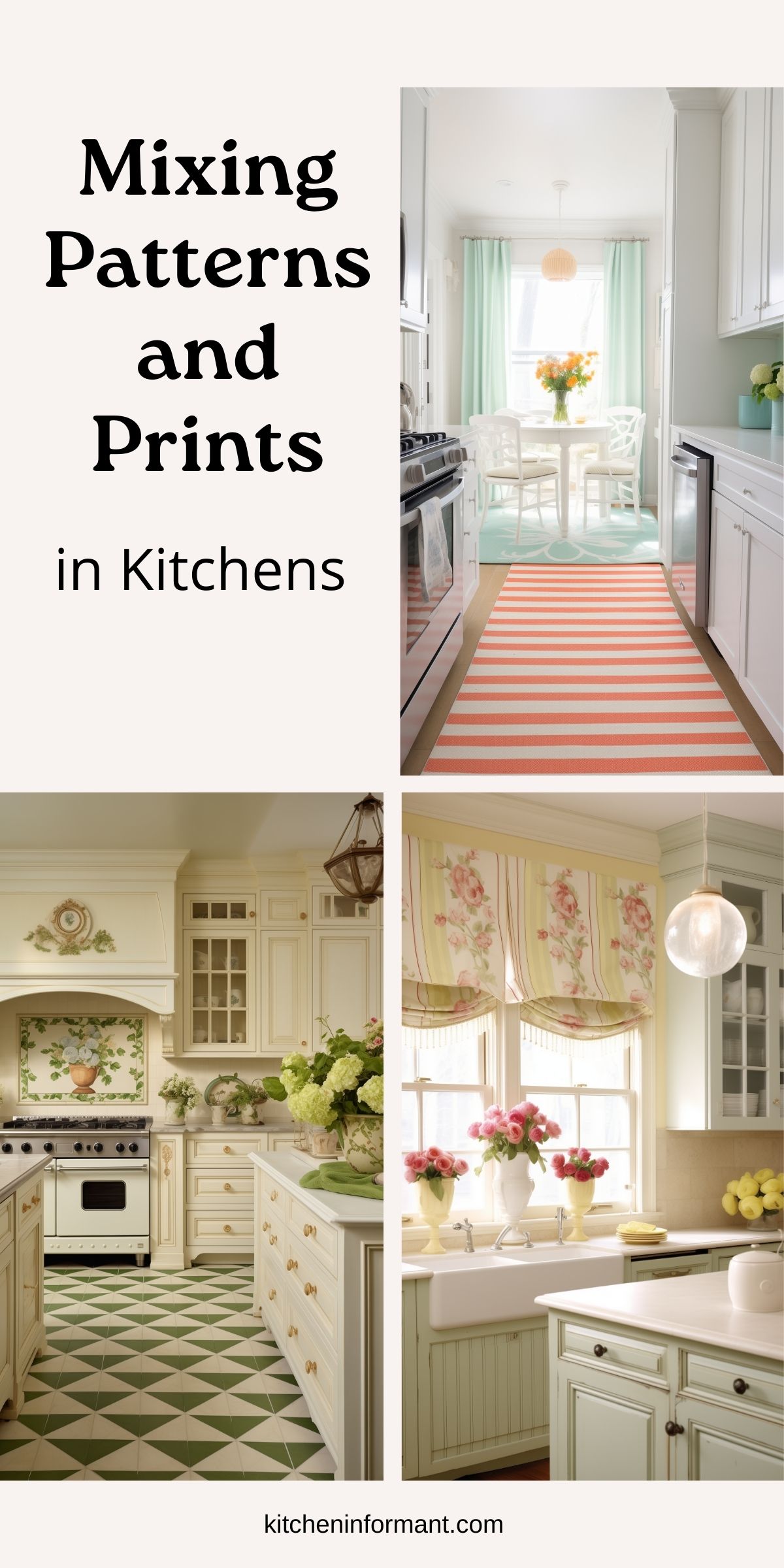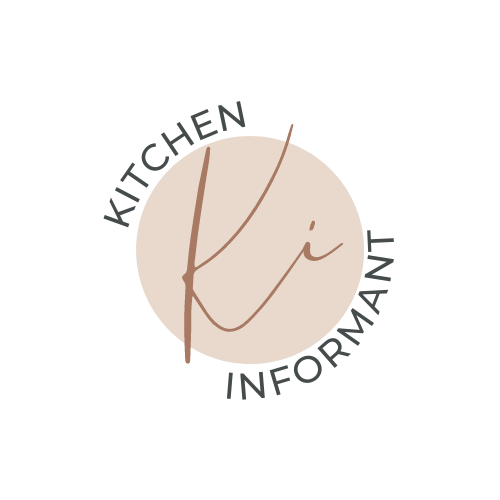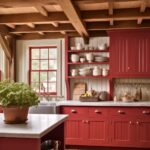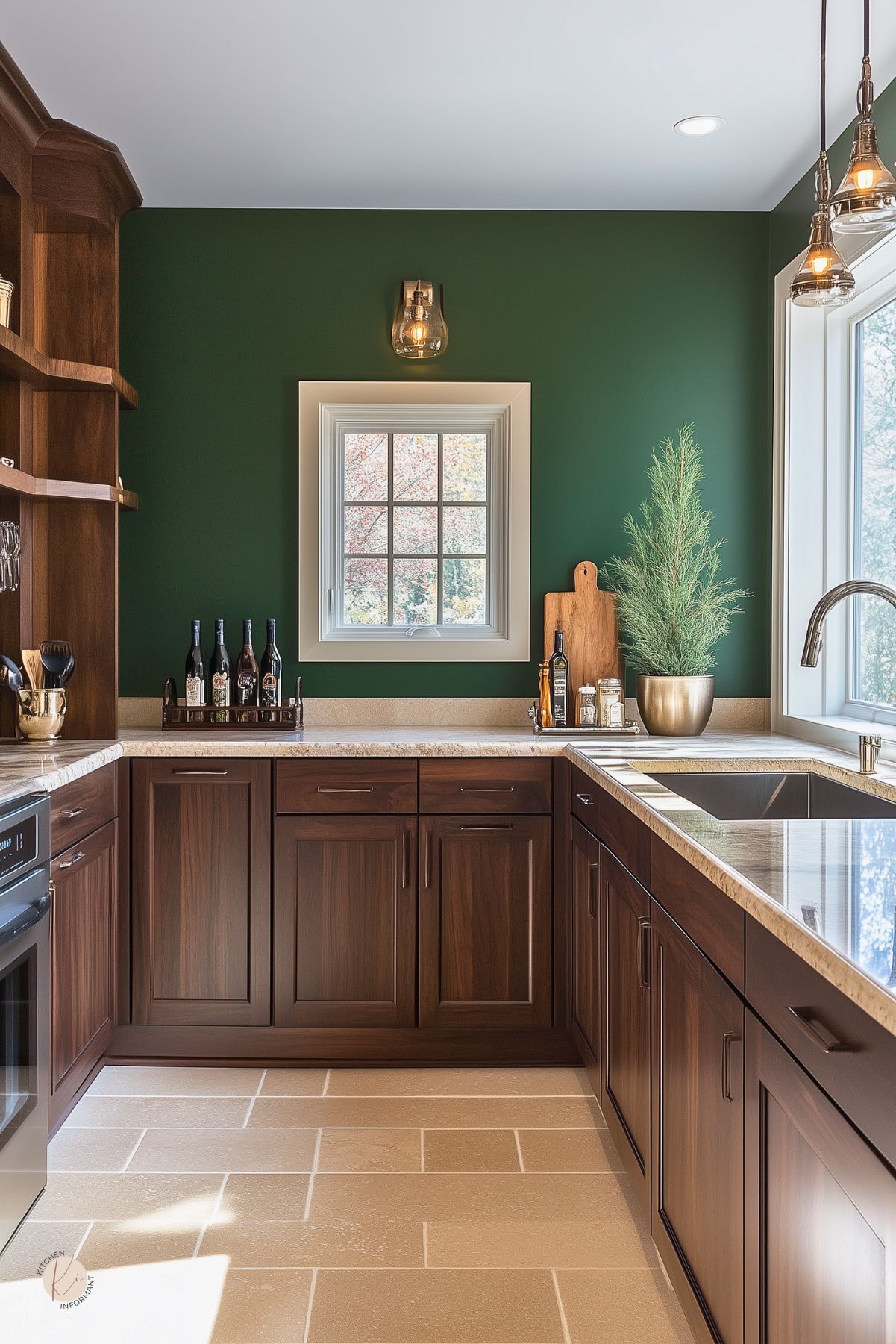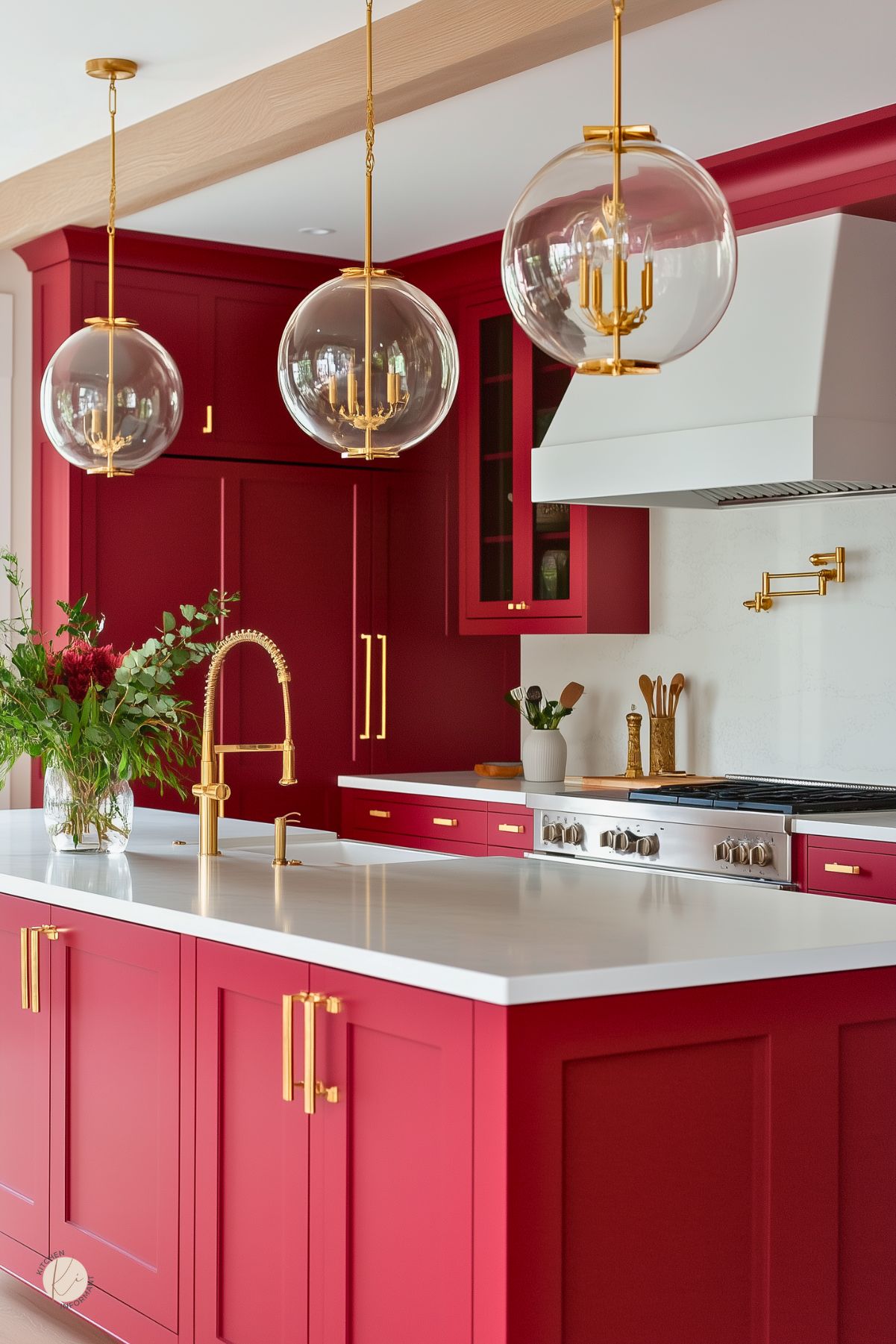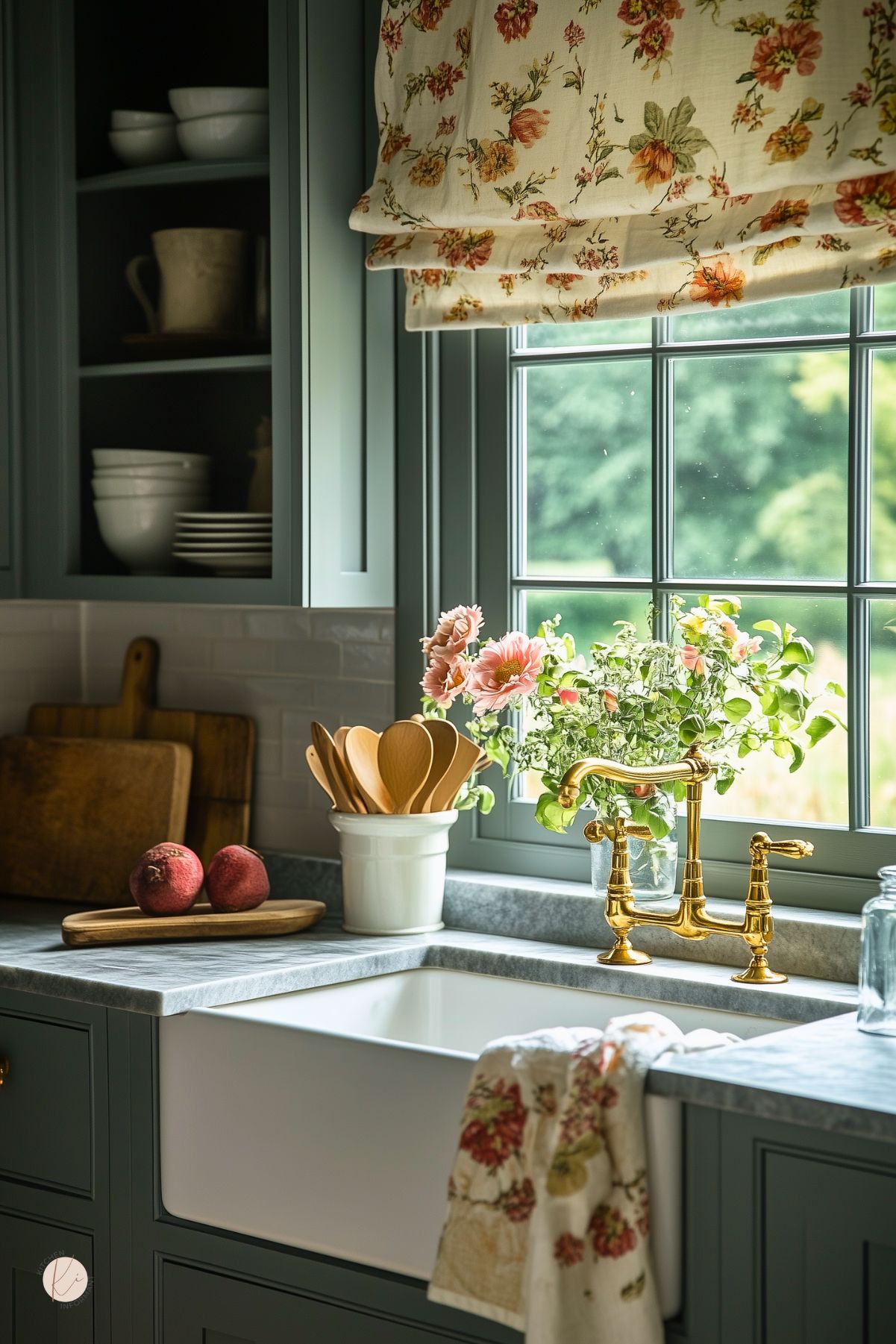Mixing patterns and prints can transform a kitchen into a vibrant and inviting space. From cheerful florals to bold geometrics, the right combination adds personality and warmth.
To create a stunning kitchen, focus on balance and harmony in your patterns. Make sure they complement each other instead of clashing.
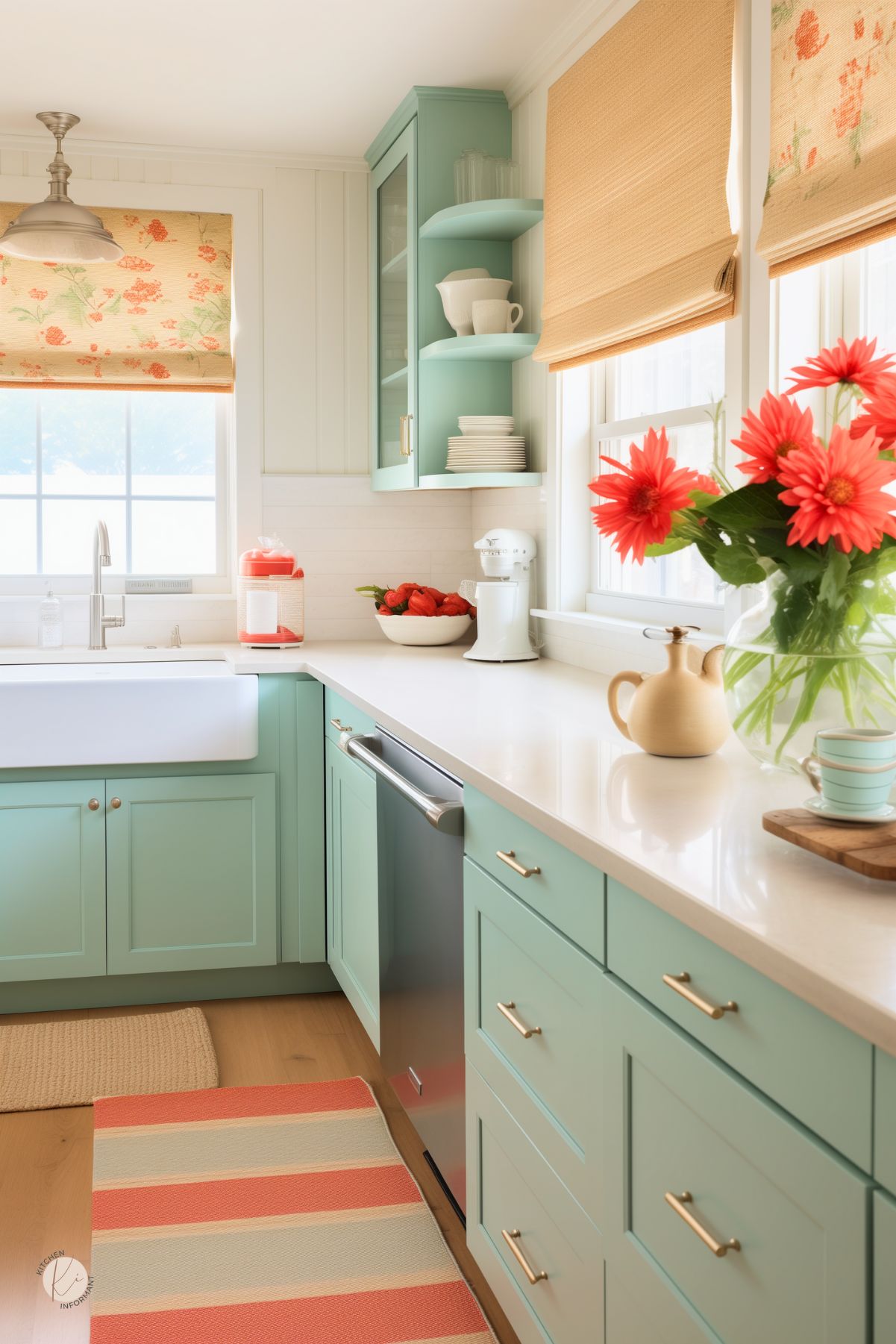
With a few thoughtful tips, anyone can achieve a stylish look. Layering patterns with varying scales can help create depth without overwhelming the senses.
Incorporating contrasting colors and textures can also enhance the visual appeal, making the kitchen feel lively and engaging.
Embracing creativity in kitchen design opens a world of possibilities. Whether one prefers a modern aesthetic or a cozy farmhouse vibe, mixing patterns allows for unique expression.
Curating the perfect blend of prints will not only beautify the space but also make cooking and gathering even more enjoyable.
The Basics of Mixing Patterns and Prints
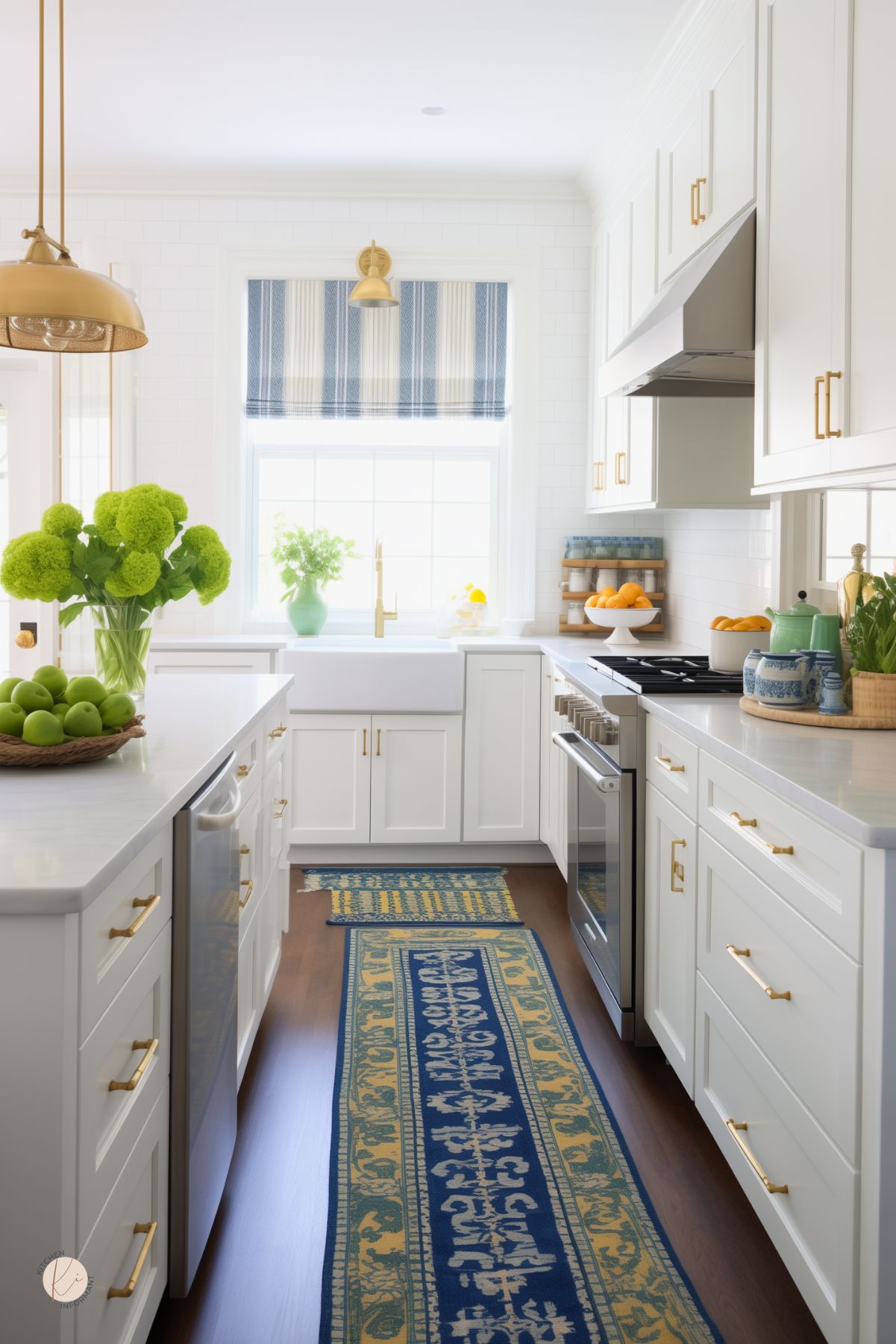
Mixing patterns and prints in a kitchen can create a lively and inviting space. It is important to consider scale, color, and texture to achieve a harmonious look.
Understanding Scale and Proportion
Scale refers to the size of the patterns used in the design. When mixing patterns, one should choose a variety of scales to create balance.
For example, a large floral print can pair well with a smaller geometric design. This contrast draws the eye while keeping everything feeling coordinated.
Proportion also matters. Mixing patterns of similar proportions can make a design feel overwhelming.
It is better to combine a bold, large-scale print with smaller ones. This technique ensures that the overall room does not get too busy and chaotic, making it inviting.
Balancing Colors and Textures
A cohesive color palette is key to mixing patterns successfully.
It is helpful to select three to five main colors to anchor the design. These colors should work well together and can come from various elements, like cabinets, countertops, or accessories.
Textures add depth to the mix. Combining smooth surfaces with textured fabrics or tiles can enrich the design.
For example, pairing a glossy tile backsplash with a soft linen curtain can create visual interest. By balancing colors and textures, a designer can achieve a stunning result.
Pattern Hierarchies Explained
Creating a pattern hierarchy means establishing a clear order in the design. This is important to guide the eye through the space effectively.
One can designate a dominant pattern and support it with secondary patterns.
For instance, a large-scale patterned wallpaper can serve as the main feature. Smaller, complementary patterns on dish towels or tablecloths can enhance the look without competing.
This layered approach keeps the kitchen feeling dynamic yet organized. By thoughtfully arranging patterns, the space can look well put together and stylish.
Design Strategies for Pattern Mixing
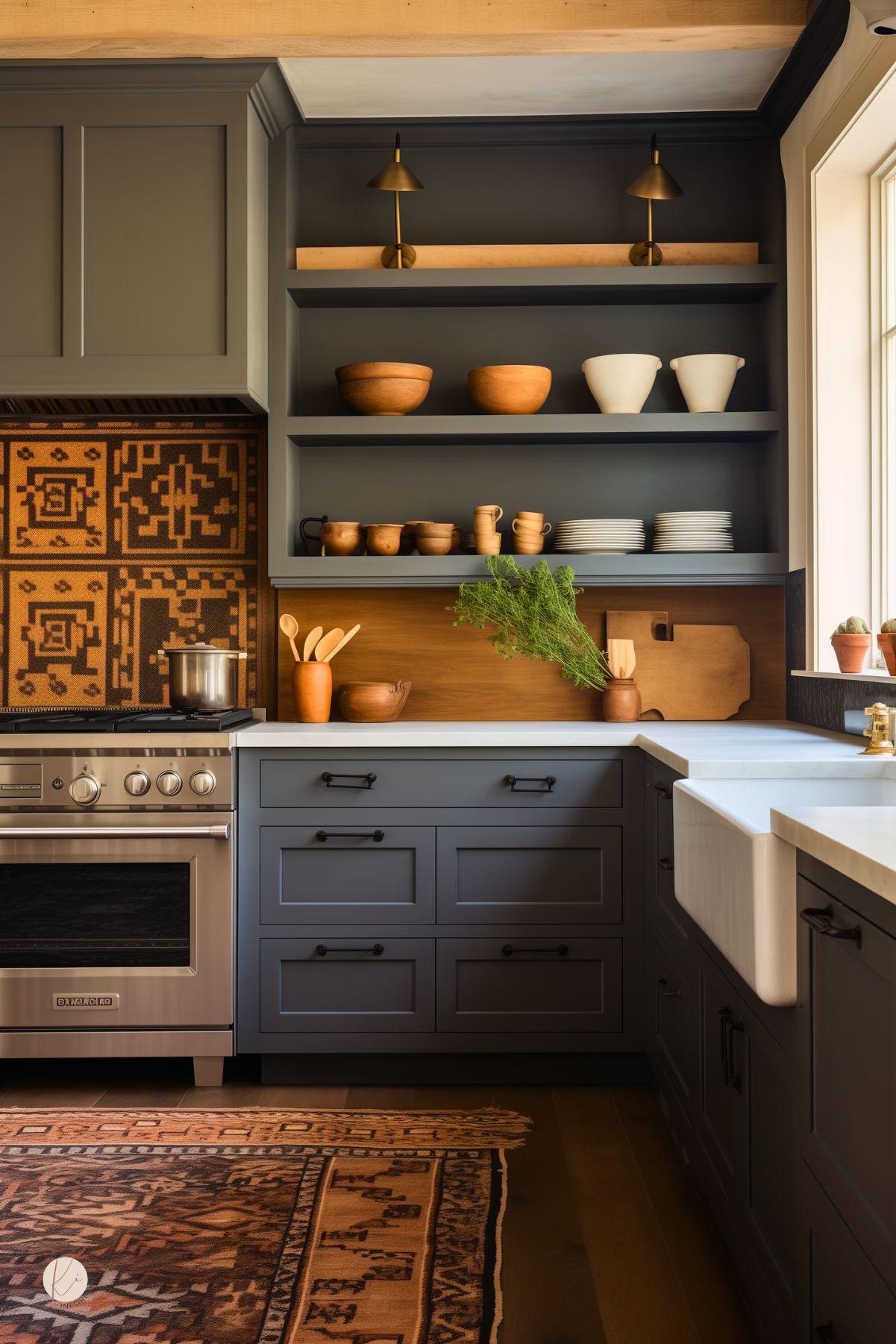
Mixing patterns and prints in a kitchen can create a unique and vibrant space. By focusing on design strategies, anyone can achieve a beautifully balanced look.
Key techniques include defining focal points, selecting complementary prints, and establishing rhythm through repetition.
Focal Points and Accents
Creating focal points is essential when mixing patterns. A focal point is an area that draws the eye.
In a kitchen, this could be a bold backsplash or a statement rug. Using a strong pattern, like a geometric tile, in one area can create interest.
Accent pieces, such as curtains or decorative dishware, should complement the focal design.
For example, pairing floral prints with a geometric tile creates contrast while maintaining harmony. The focal point serves as the star of the show, while accents support the overall style.
Complementary and Contrasting Prints
Choosing the right combinations of patterns is crucial.
Complementary prints work well together and can unify a space. For example, soft florals can pair nicely with subtle stripes. Both designs should share a common color palette to create a cohesive look.
Contrasting prints can add excitement. Mixing a bold, colorful pattern with a quieter print can make a space feel dynamic.
To balance this, consider the scale of the patterns. Large and small patterns can harmonize, creating an engaging visual texture in the kitchen.
Repetition and Rhythm
Repetition can establish a sense of rhythm in pattern mixing. Using a particular motif in different areas can tie the room together.
For example, a specific floral pattern on dish towels, curtains, and a tablecloth can create continuity.
Incorporating variations of a pattern can also add depth. This might include different sizes or colorways of the same print.
This approach keeps the space lively while avoiding chaos. Achieving a rhythm through repetition makes the kitchen feel thoughtfully designed.
Selecting Materials and Textiles
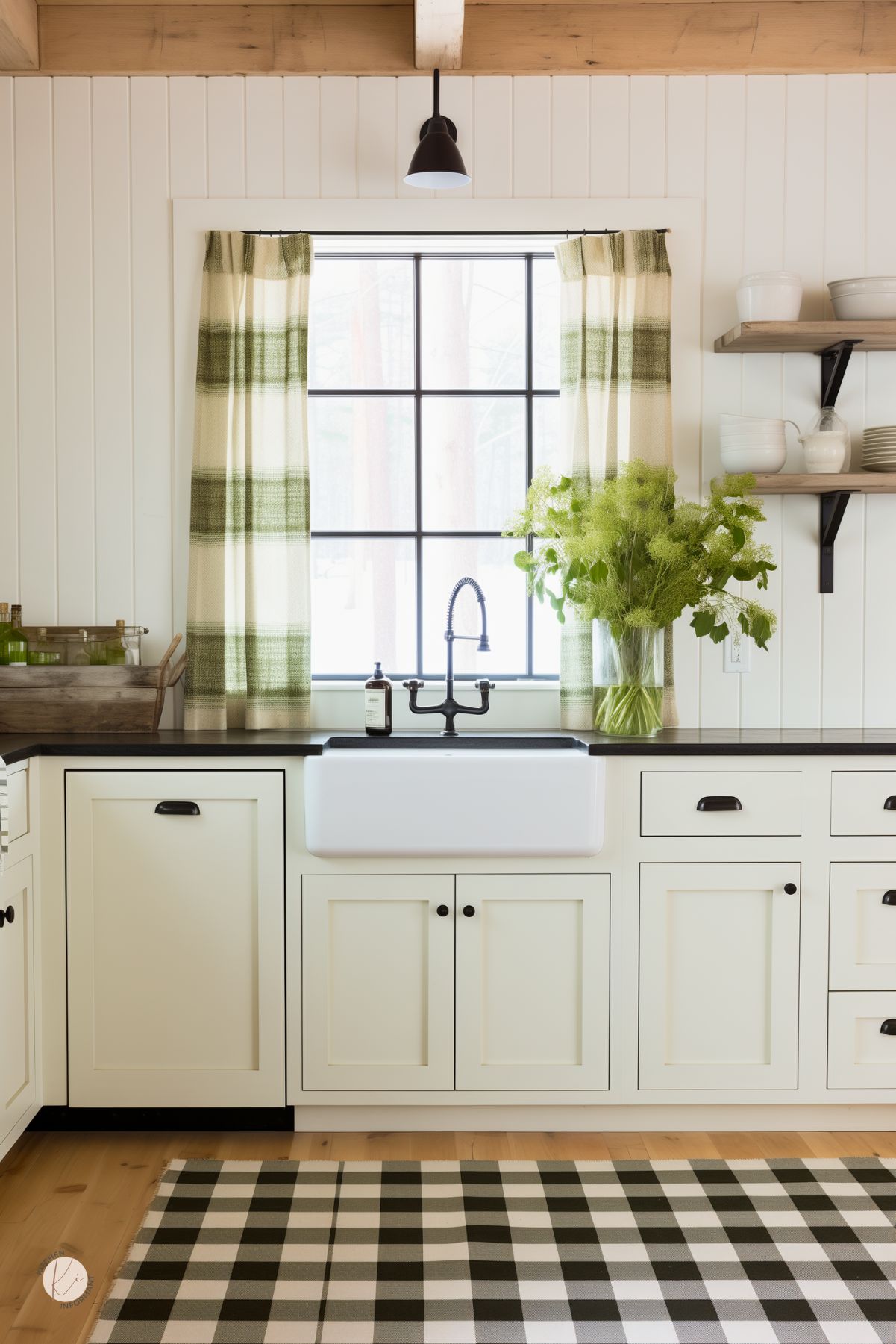
Choosing the right materials and textiles for a kitchen can enhance its style and functionality.
Emphasizing durability, practicality, and eco-friendliness can help create a space that is both beautiful and sensible.
Choosing Durable Fabrics
Durability is key when selecting fabrics for the kitchen. Many fabrics can resist stains and wear, making them ideal for high-traffic areas.
Options like commercial-grade polyester or treated cotton blends are good choices.
Fabrics to Consider:
- Canvas: Tough and easy to clean.
- Denim: Sturdy and stylish.
- Microfiber: Soft yet resilient.
These materials can withstand spills and frequent cleaning without losing their charm. Fabrics with a higher thread count provide better durability as well.
Functional Finishes for Kitchen Use
Functional finishes on textiles can add to their practicality. For example, water-repellent coatings can protect against spills.
Additionally, many fabrics have treatments that make them stain-resistant.
Key Features to Look For:
- Washable: Easy to care for and maintain.
- Fade-resistant: Keeps colors vibrant longer.
- Anti-microbial: Helps reduce odors and bacteria.
Choosing items with these finishes ensures that the fabrics stay fresh and appealing, even in the busy kitchen environment.
Eco-Friendly and Sustainable Options
Sustainability is becoming increasingly important for many homeowners.
Eco-friendly materials like organic cotton, bamboo, and hemp can be stylish and good for the planet.
Benefits of Sustainable Textiles:
- Biodegradable: Breaks down naturally over time.
- Non-toxic: Safer for the environment and health.
- Energy-efficient: Requires less energy to produce.
These options not only support environmentally conscious living but also bring a unique texture and visual appeal to the kitchen.
Selecting sustainable textiles contributes to a healthier home and planet.
Application in Kitchen Spaces
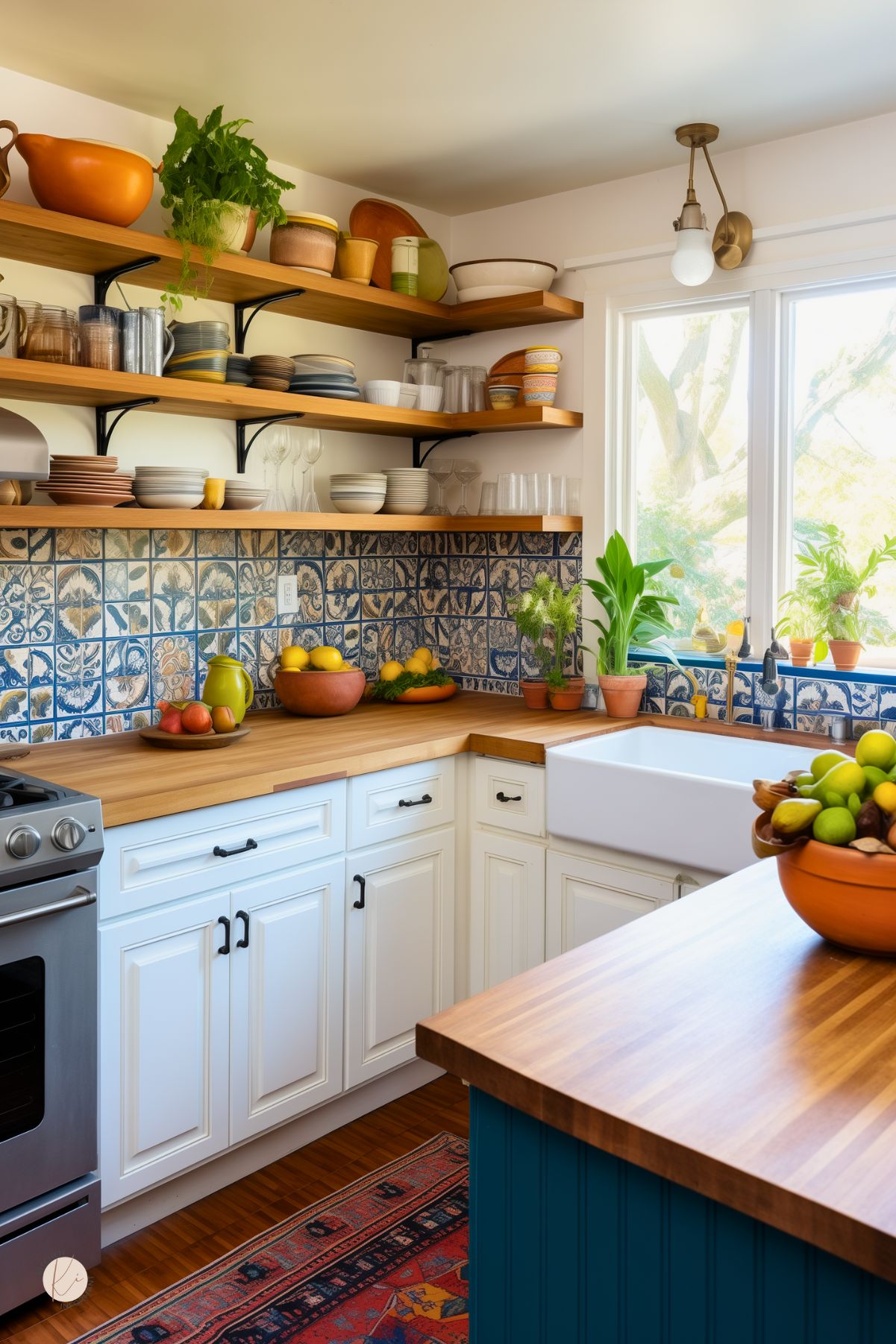
Mixing patterns and prints can bring life to a kitchen. It allows for creativity and personal expression. Here are some practical applications to enhance the kitchen environment.
Window Treatments and Blinds
Window treatments can set the mood for a kitchen. Mixing patterns in curtains or blinds can create a unique focal point.
For instance, pairing geometric blinds with floral curtains adds visual interest.
Sheer fabrics can let light in while still using bold prints. Consider layering different textiles for depth.
Also, using tiebacks with contrasting patterns can accentuate the window area. Mixing prints on window treatments can make a kitchen feel more inviting and warm.
Wallpaper and Wall Decals
Wallpaper and wall decals provide a fantastic opportunity to mix patterns. A geometric wallpaper can serve as a dramatic backdrop for an open kitchen. Pair this with whimsical wall decals for a playful touch.
Using a mix of prints on an accent wall can draw the eye. It’s a way to showcase personality in design.
Removable wall decals allow for easy changes if styles shift over time. This simple update can refresh the kitchen’s look without a complete remodel.
Tableware and Accessories
Tableware and accessories are essential for adding patterns to the kitchen.
Consider using plates with different designs for a colorful table setting. Mixing florals, stripes, and polka dots can create an eclectic look.
Complement this with patterned napkins or table runners. It is a fun way to showcase personality during meals.
Even smaller accessories, like spice jars or utensil holders, can bring excitement. The key is to maintain a balance that feels inviting, not overwhelming. Mixing prints in tableware enhances the dining experience.
Color Palettes and Print Pairing
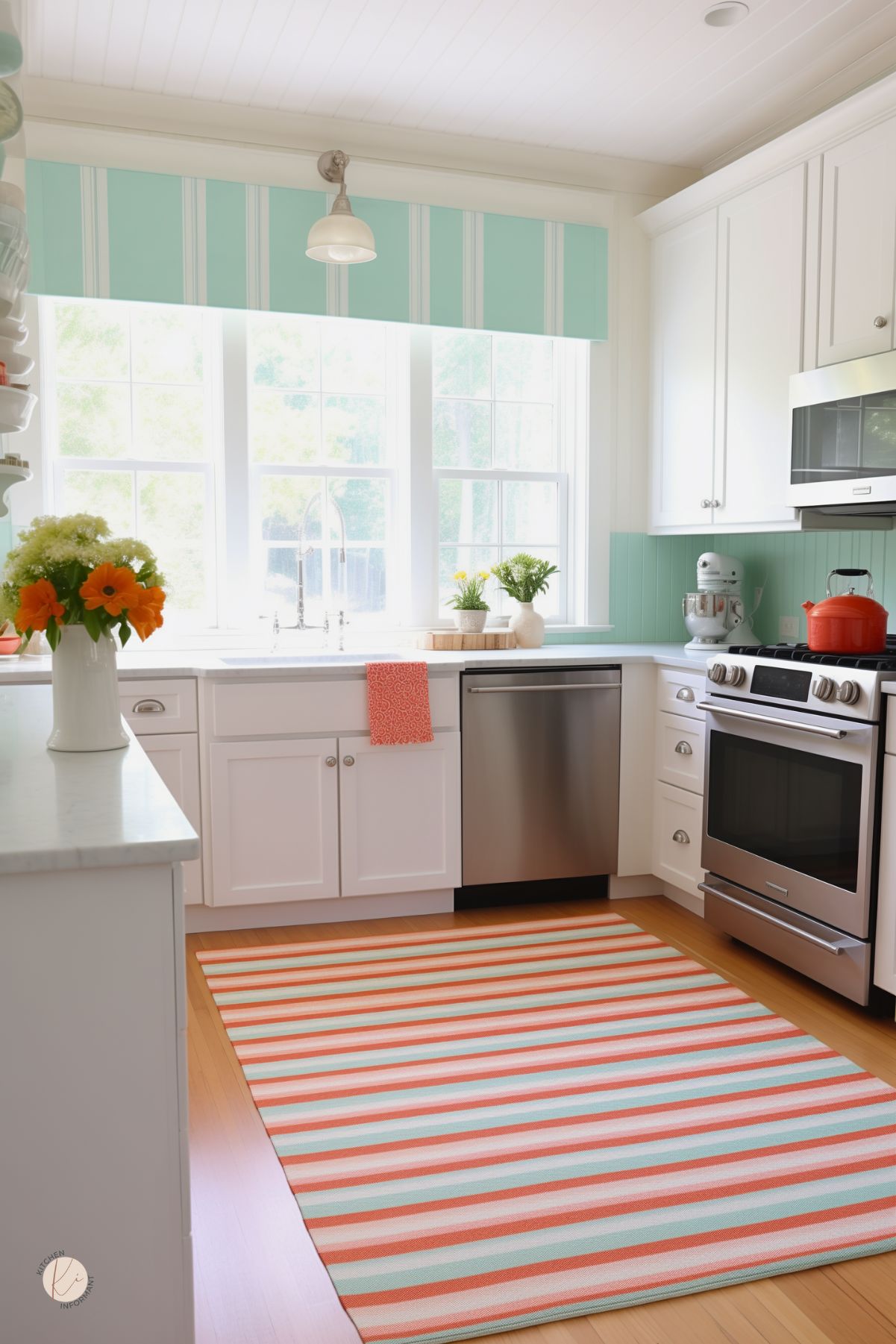
Choosing the right color palette and knowing how to pair prints can transform a kitchen. Different tones and combinations can create unique atmospheres, making the space inviting and stylish.
Warm Versus Cool Tones
Warm tones, like reds, oranges, and yellows, can create a cozy and inviting kitchen. They evoke feelings of warmth and energy.
Mixing these with prints featuring floral patterns or rustic designs enhances the warm vibe.
Cool tones, such as blues, greens, and purples, offer a calm and refreshing feel. These colors can pair well with geometric prints or minimalist designs.
A combination of cool colors in a bold print can create a balanced look, making the kitchen feel serene.
Monochromatic Schemes
Monochromatic schemes involve using different shades of a single color. This approach can lead to a sophisticated and cohesive kitchen design.
For example, a gray kitchen can incorporate light gray cabinets, dark gray countertops, and patterned gray tiles.
When choosing patterns in a monochromatic scheme, variety is key.
Mixing textures and patterns within the same color family keeps the design interesting.
Stripes or polka dots in varying shades can add depth while maintaining the same base color.
Bold and Dramatic Combinations
For a striking kitchen, bold and dramatic combinations stand out.
Pairing contrasting colors, like deep blue with bright yellow, creates an eye-catching effect.
This method works best with large patterns, such as oversized florals or abstract designs.
Incorporating metallic accents, such as gold or silver, can elevate bold choices.
For instance, a vibrant print combined with metallic finishes in fixtures can reflect light beautifully.
The key is to balance the bold prints with solid colors, ensuring the kitchen remains stylish and functional.
Incorporating Cultural and Period Designs
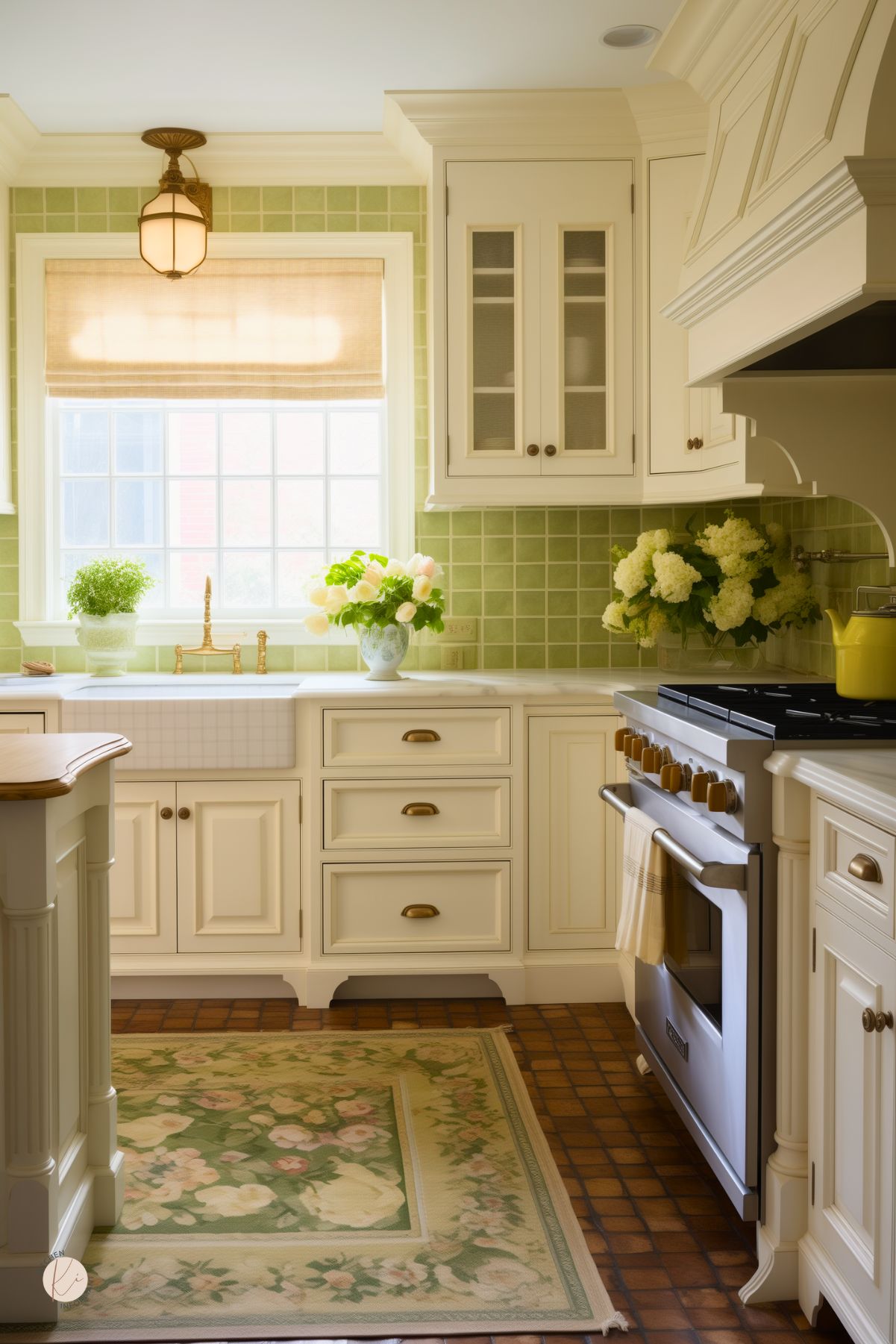
Blending cultural and period designs can create a unique kitchen that tells a story.
By thoughtfully mixing prints and patterns, each element contributes to a stylish and cohesive look.
Historical Prints in Modern Contexts
Using historical prints in a kitchen can add depth and personality.
Traditional designs like paisleys or florals can evoke warmth and charm.
Incorporating these prints into modern cabinetry or textiles, such as curtains or tablecloths, creates an inviting feel.
For instance, a vintage floral wallpaper paired with sleek countertops offers a stunning contrast.
Using these prints can connect the kitchen to an era or culture, enhancing its style.
To make a bold statement, consider a feature wall showcasing a large historical print.
Geometric Patterns Across Cultures
Geometric patterns have been used in art and architecture across various cultures.
From Moroccan tiles to Japanese batik, these designs can add a dynamic element to kitchens.
A backsplash with geometric tiles can serve as a focal point, creating visual interest.
Pairing different geometric patterns can be effective, but maintaining balance is crucial.
Using a mix of colors can unify the look while adding excitement.
A well-placed geometric rug can also bring warmth and texture to the space.
Vintage Touches for Contemporary Kitchens
Incorporating vintage touches enhances character in modern kitchens.
Elements such as retro appliances or subway tiles evoke nostalgia while remaining stylish.
Using vintage-inspired dishware can add charm to open shelving.
Consider using antique utensils or decorative bowls as accents to showcase personality.
Mixing old and new styles can create a cohesive look that feels timeless.
Adding vintage fixtures, like pendant lights, can brighten the space and serve as beautiful focal points.
Styling Tips and Finishing Touches
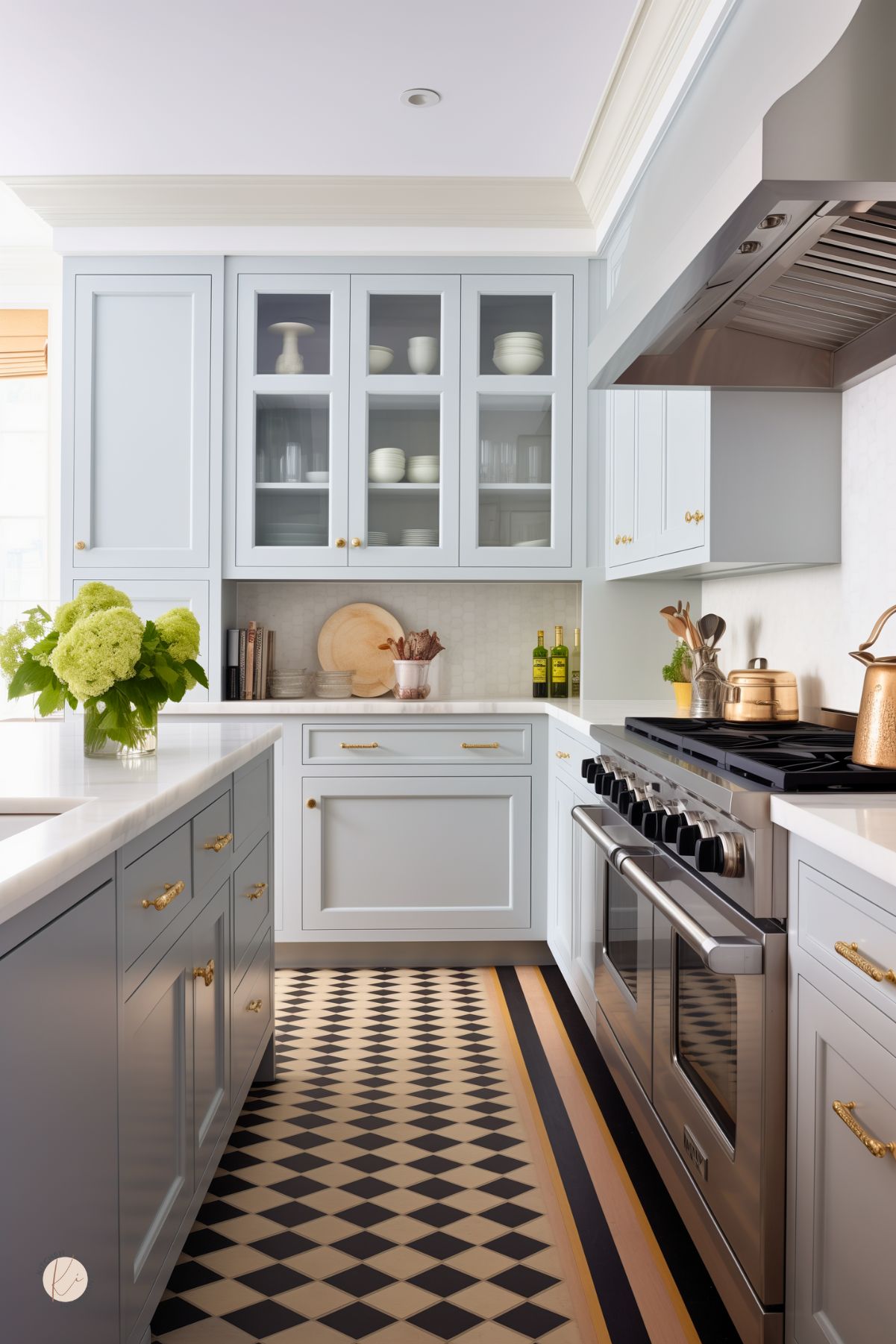
In a stunning kitchen, small details make a big impact.
Elements like art, lighting, and seasonal decor help tie everything together and enhance the overall aesthetic.
Here are some tips to elevate the look of a mixed-pattern kitchen.
Accessorizing with Art and Decor
Art can add personality to a kitchen that mixes patterns.
Choosing pieces with colors that resonate with the existing patterns helps create harmony.
For example:
- Framed prints: Artwork with bold colors can complement strong patterns.
- Ceramic decor: Unique vases or plates featuring intricate designs work well.
- Textiles: Use colorful dish towels or a patterned runner to maintain visual interest.
You can also arrange wall art or shelves creatively.
Group items in odd numbers for a casual yet stylish touch.
This makes the kitchen feel warm and inviting while showcasing your unique style.
Lighting to Enhance Patterns
Lighting plays a crucial role in showcasing patterns. A well-lit kitchen allows textures and designs to shine.
Consider these options:
- Pendant lights: Hang them over islands or tables featuring coordinating designs that echo the kitchen’s patterns.
- Under-cabinet lighting: This brings attention to wall tiles or painted patterns below cabinets.
- Dimmer switches: They allow adjusting light levels, creating a cozy mood that enhances the colors and textures in the kitchen.
You can use different light temperatures to create warmth.
Soft, yellow light works nicely with earthy tones, while cool light might highlight brighter colors.
Seasonal Updates and Variations
Changing decor seasonally adds freshness to a patterned kitchen. Small updates can completely change the atmosphere.
For spring, consider:
- Pastel colors: Introduce lighter patterns such as floral tea towels or napkins.
- Natural elements: Fresh herbs in stylish pots make the space feel vibrant.
During fall:
- Warm hues: Opt for deeper tones like burnt orange or burgundy in table settings.
- Textured items: Incorporate cozy elements like knitted table runners or woven baskets.
These updates don’t have to be expensive. Simple swaps can keep the kitchen feeling new and engaging throughout the year.
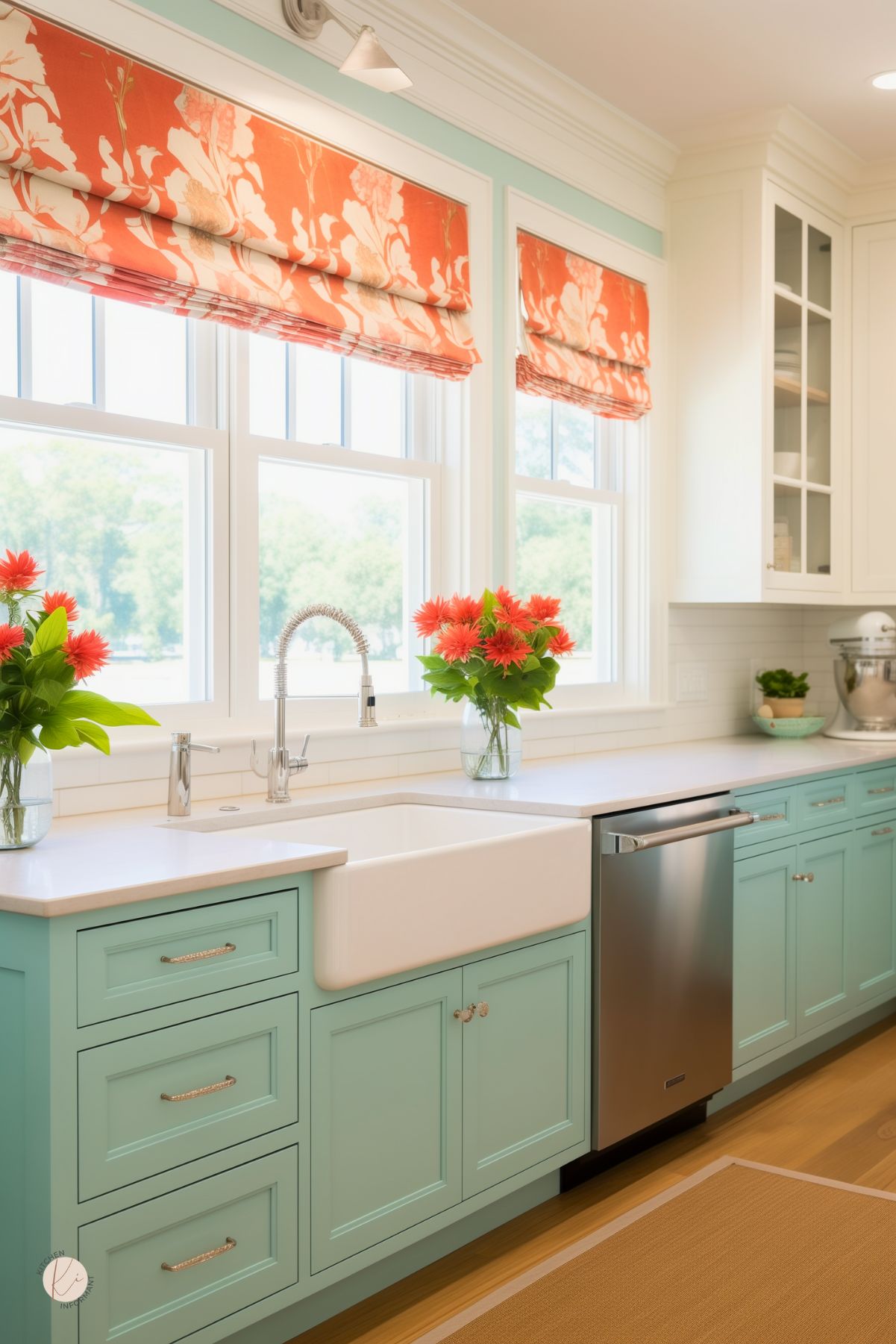
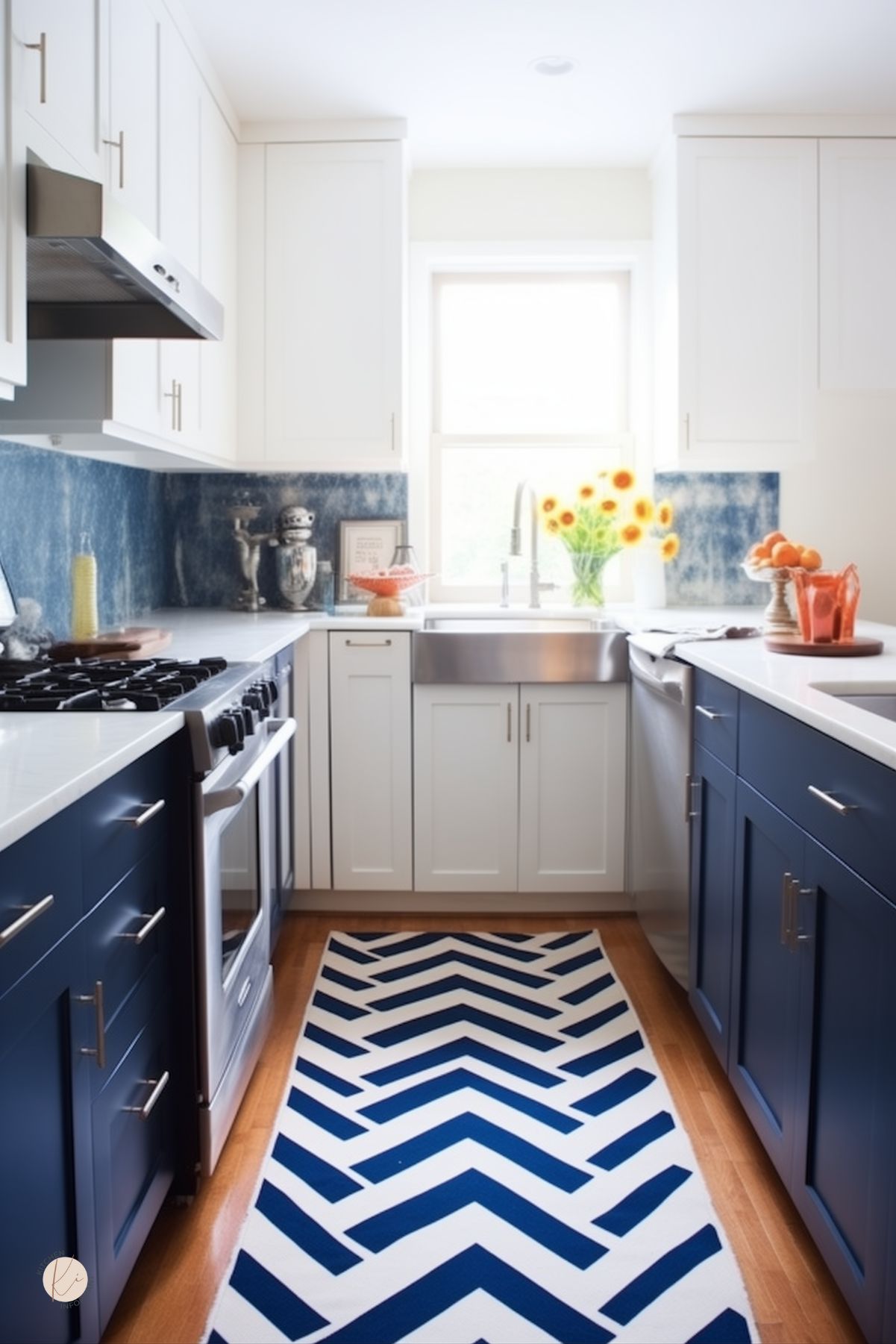
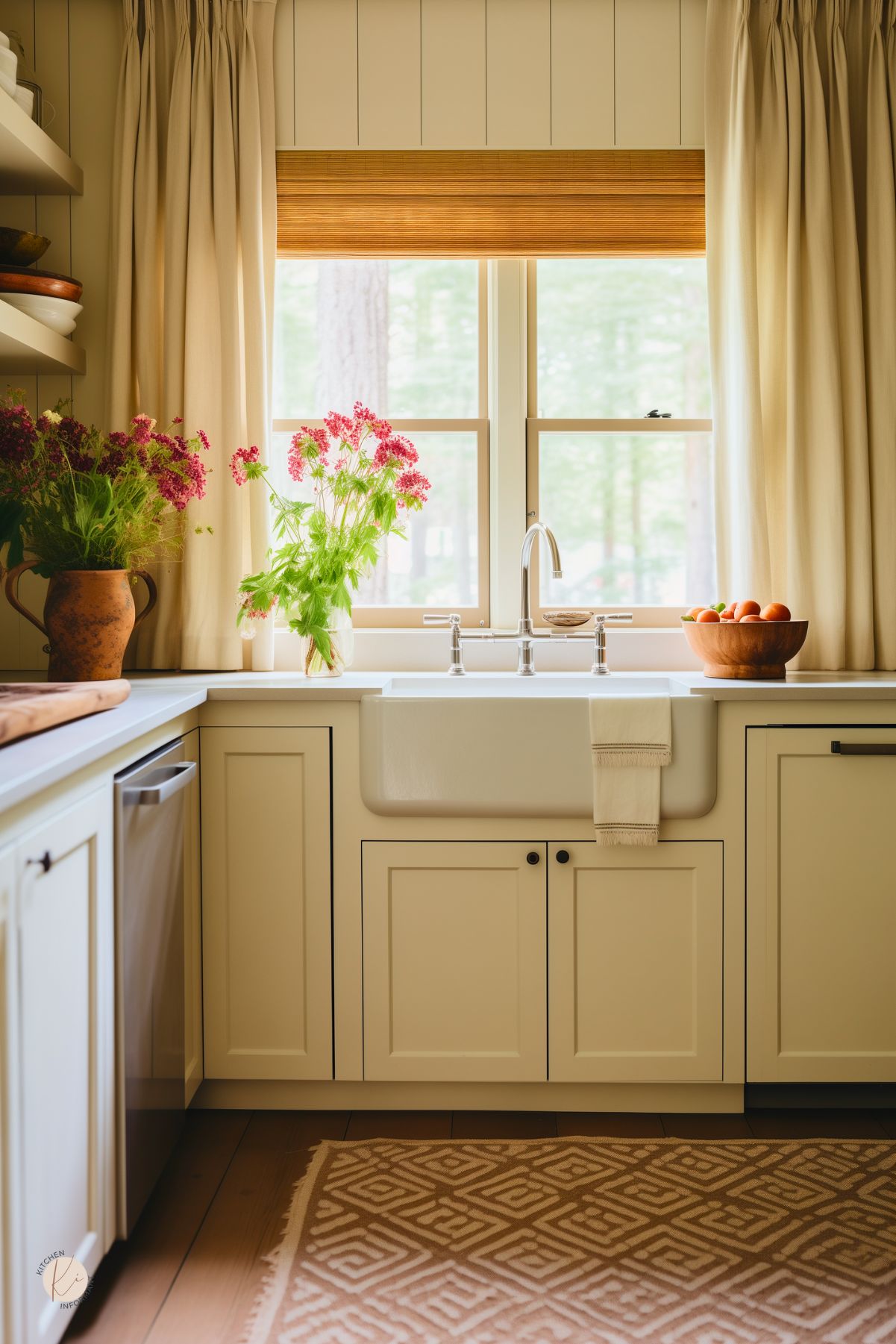
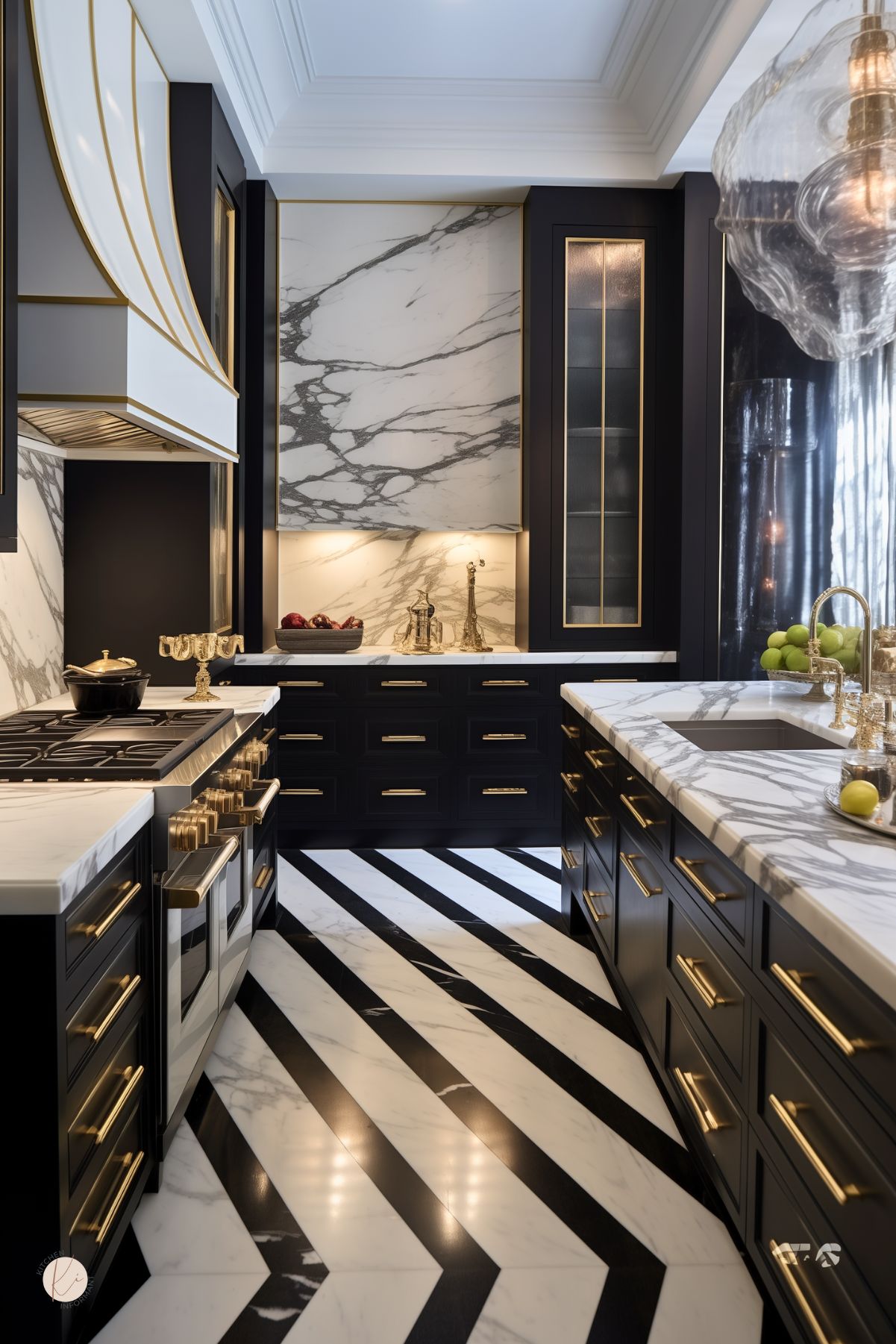
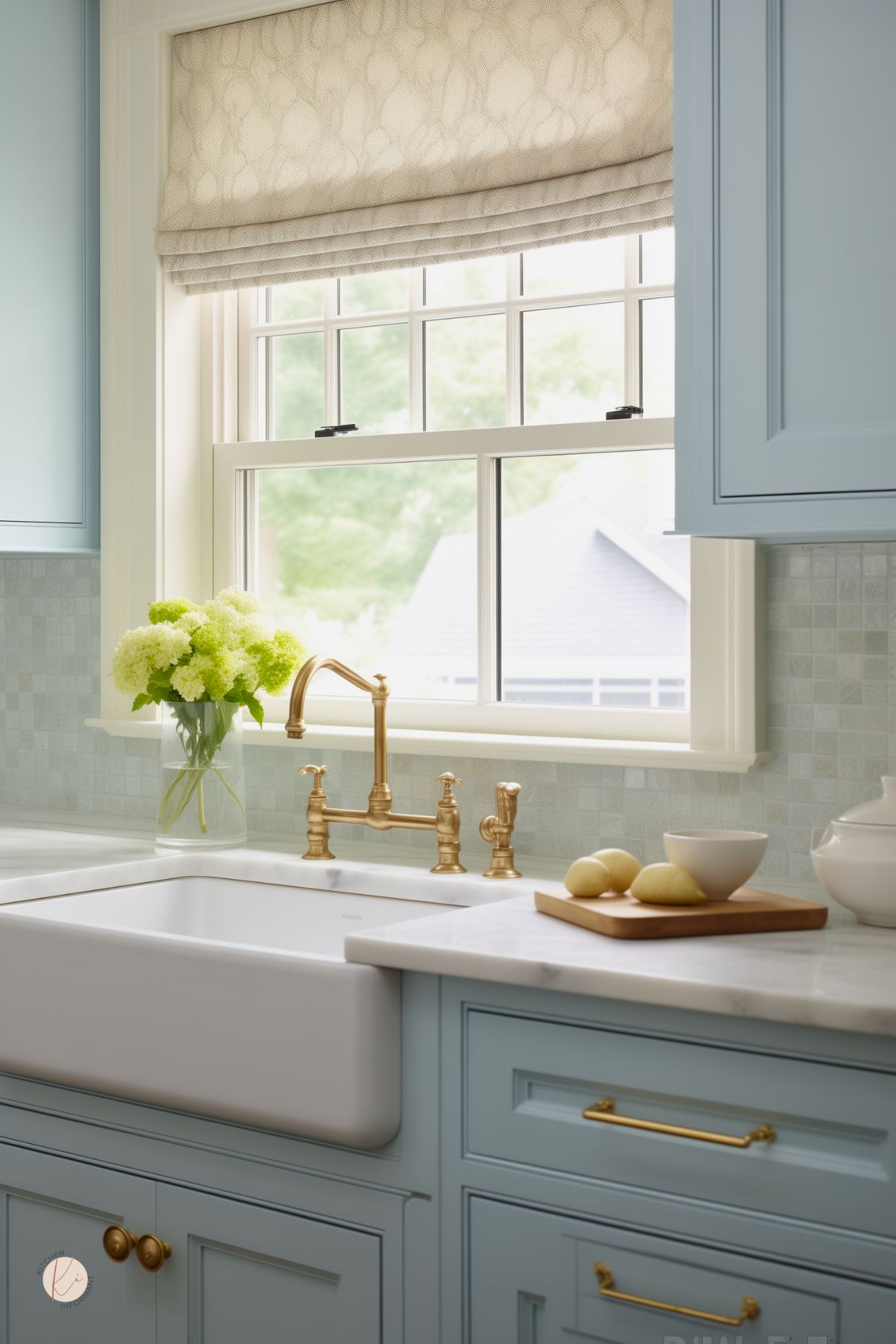
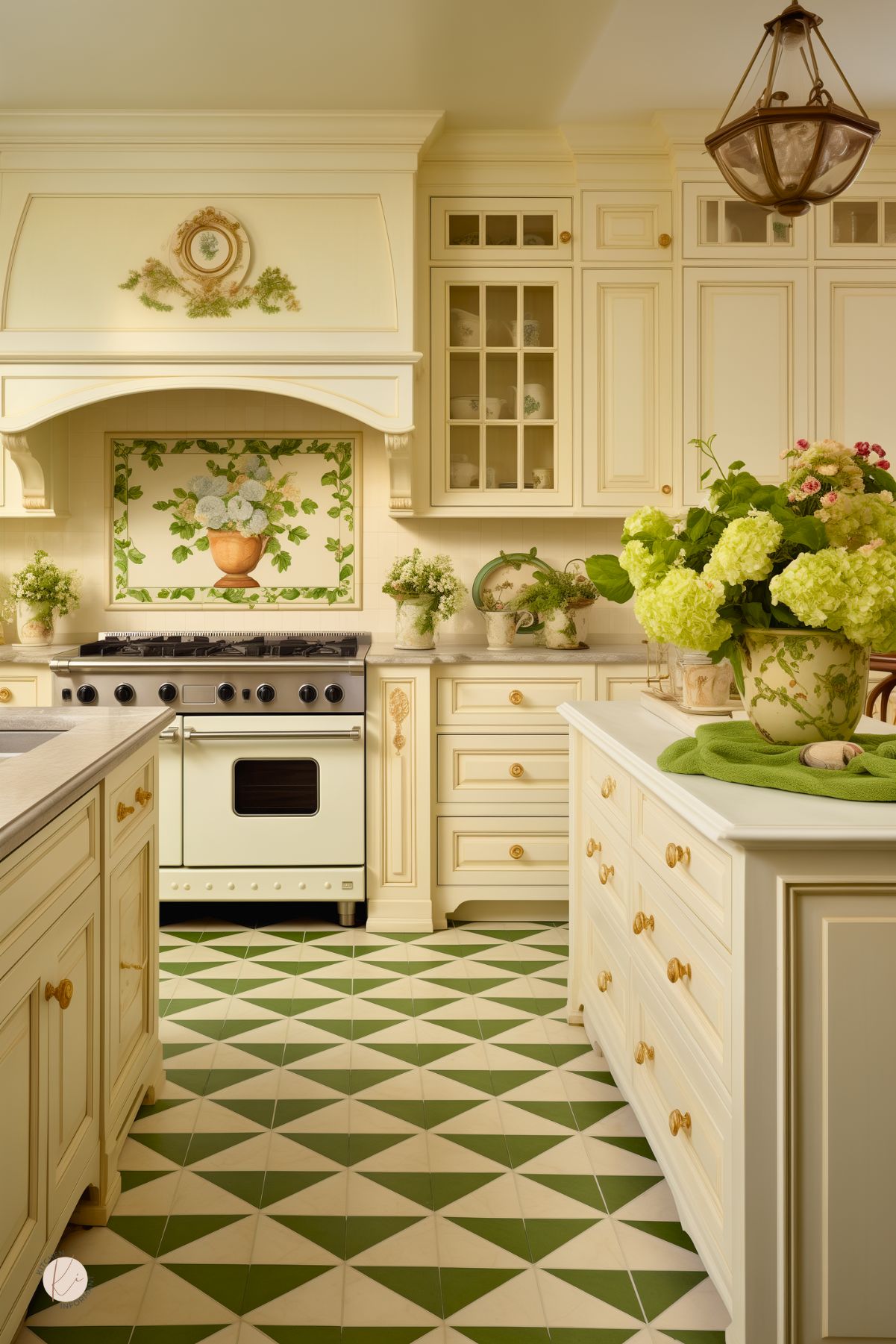
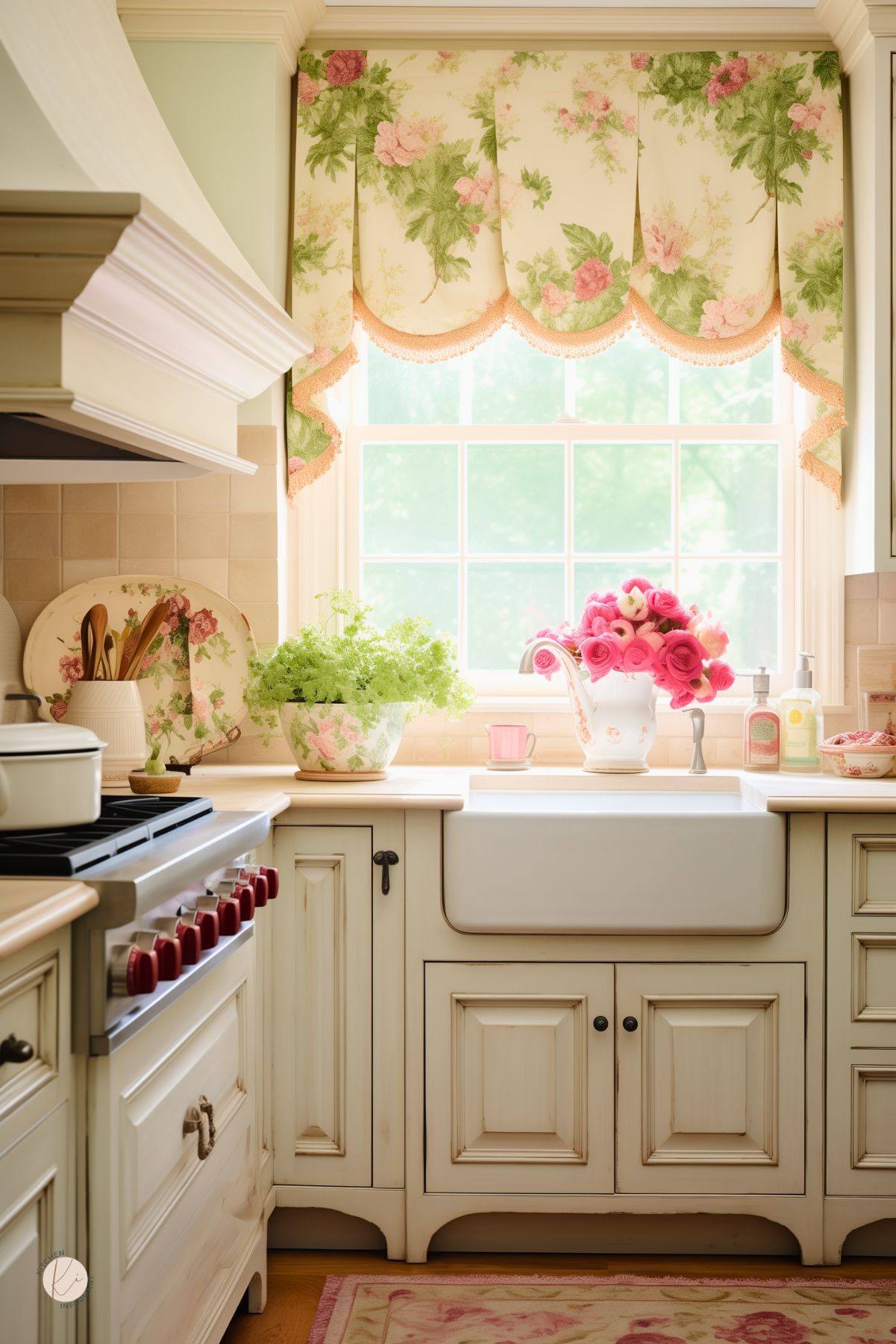
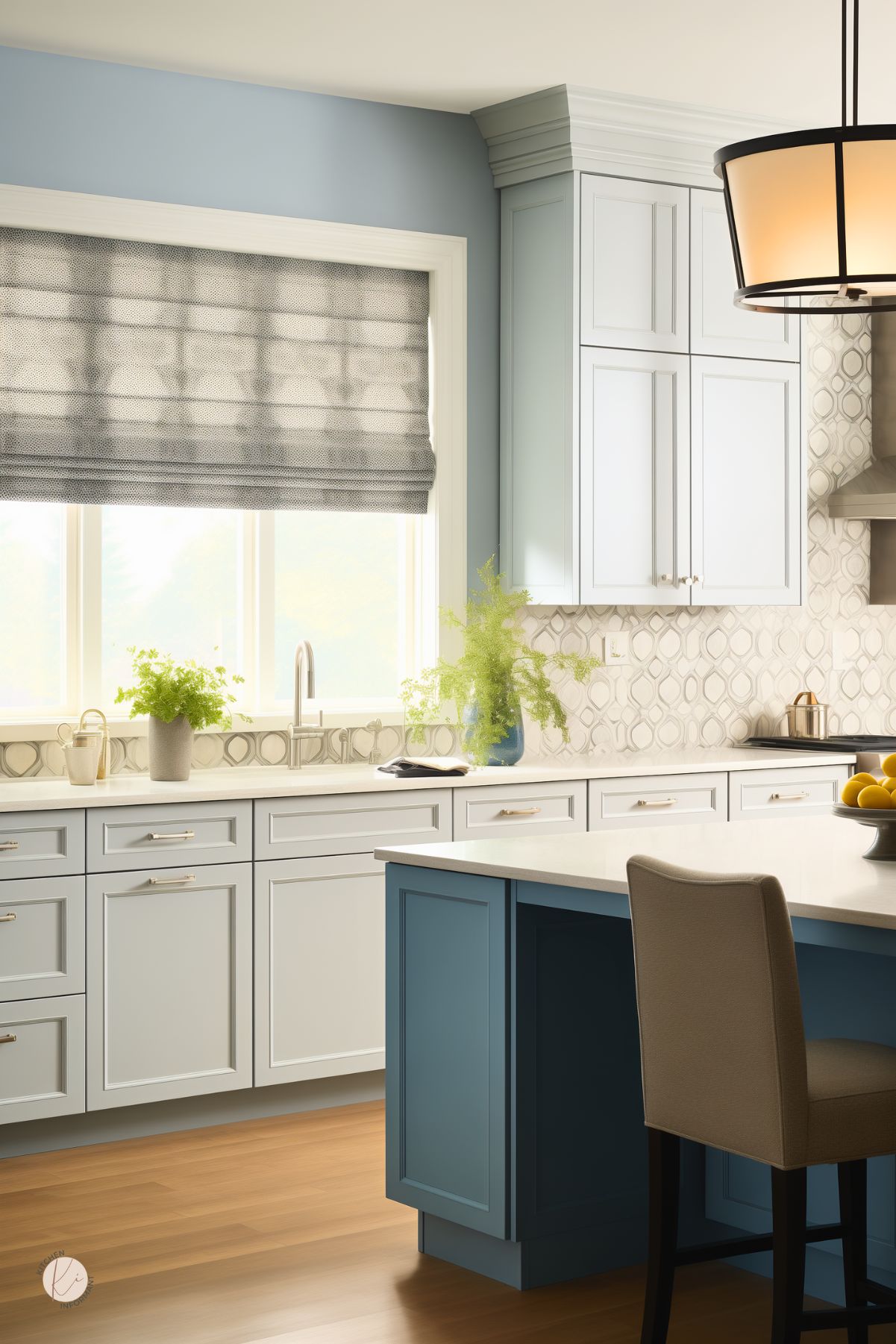
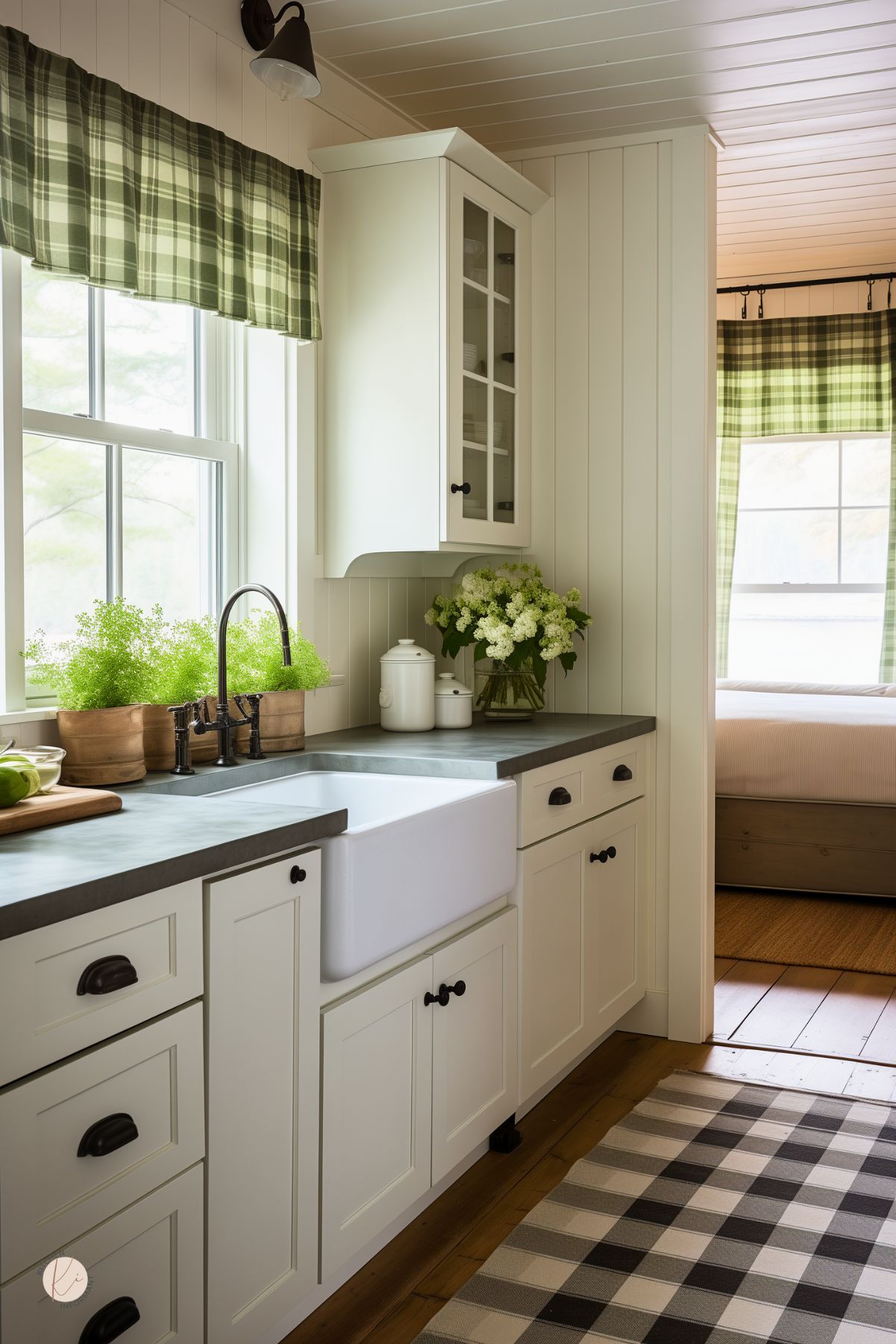
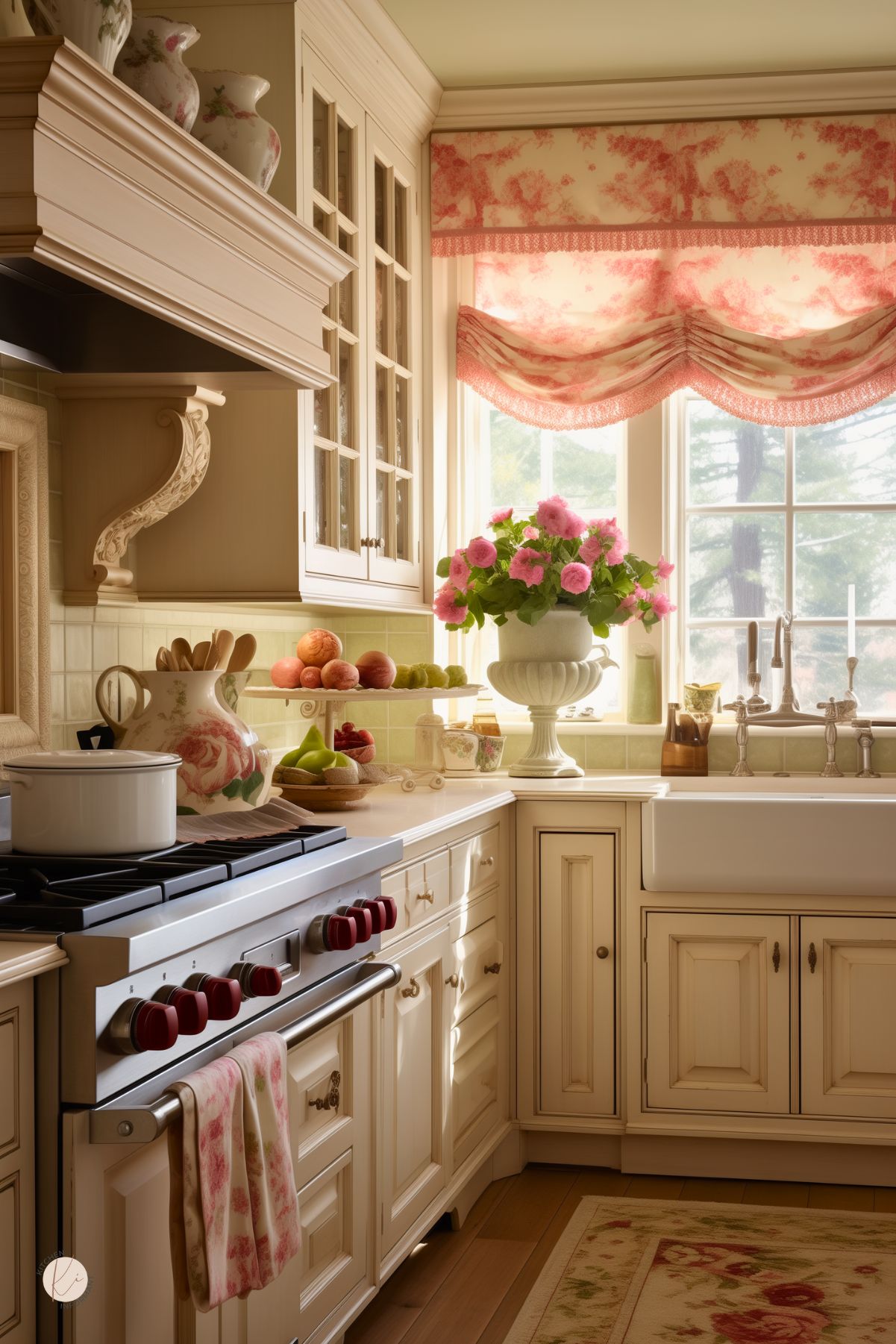
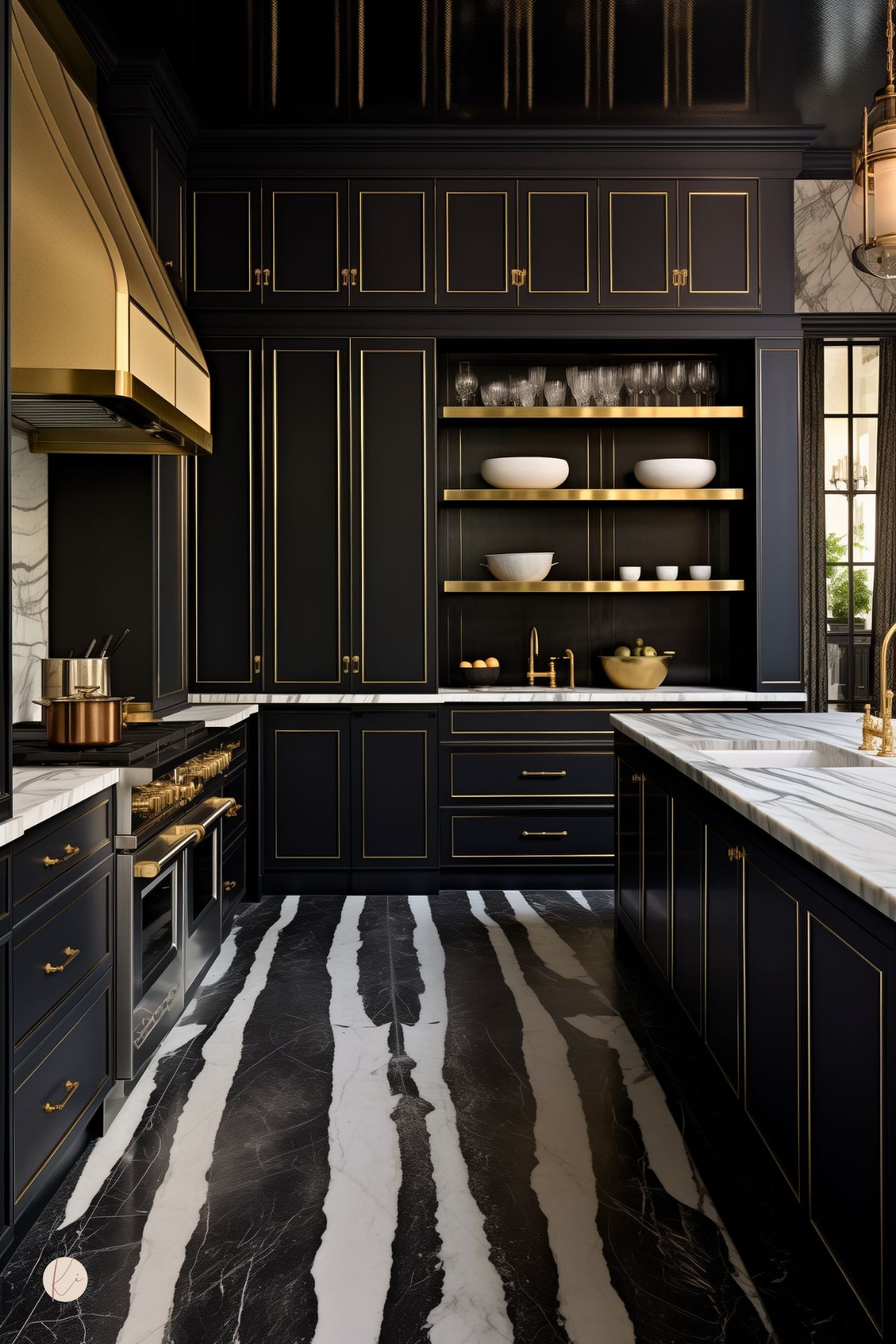
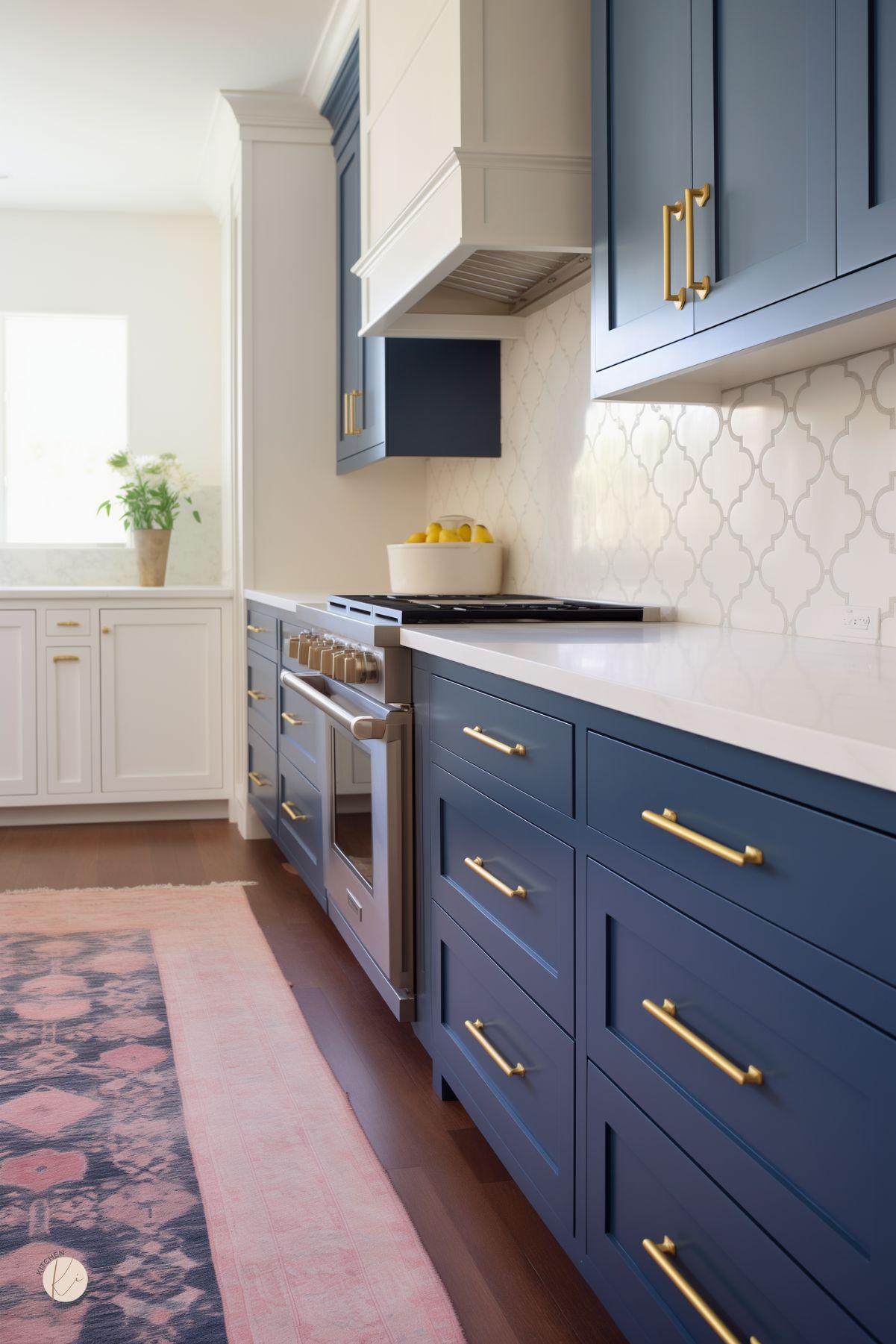
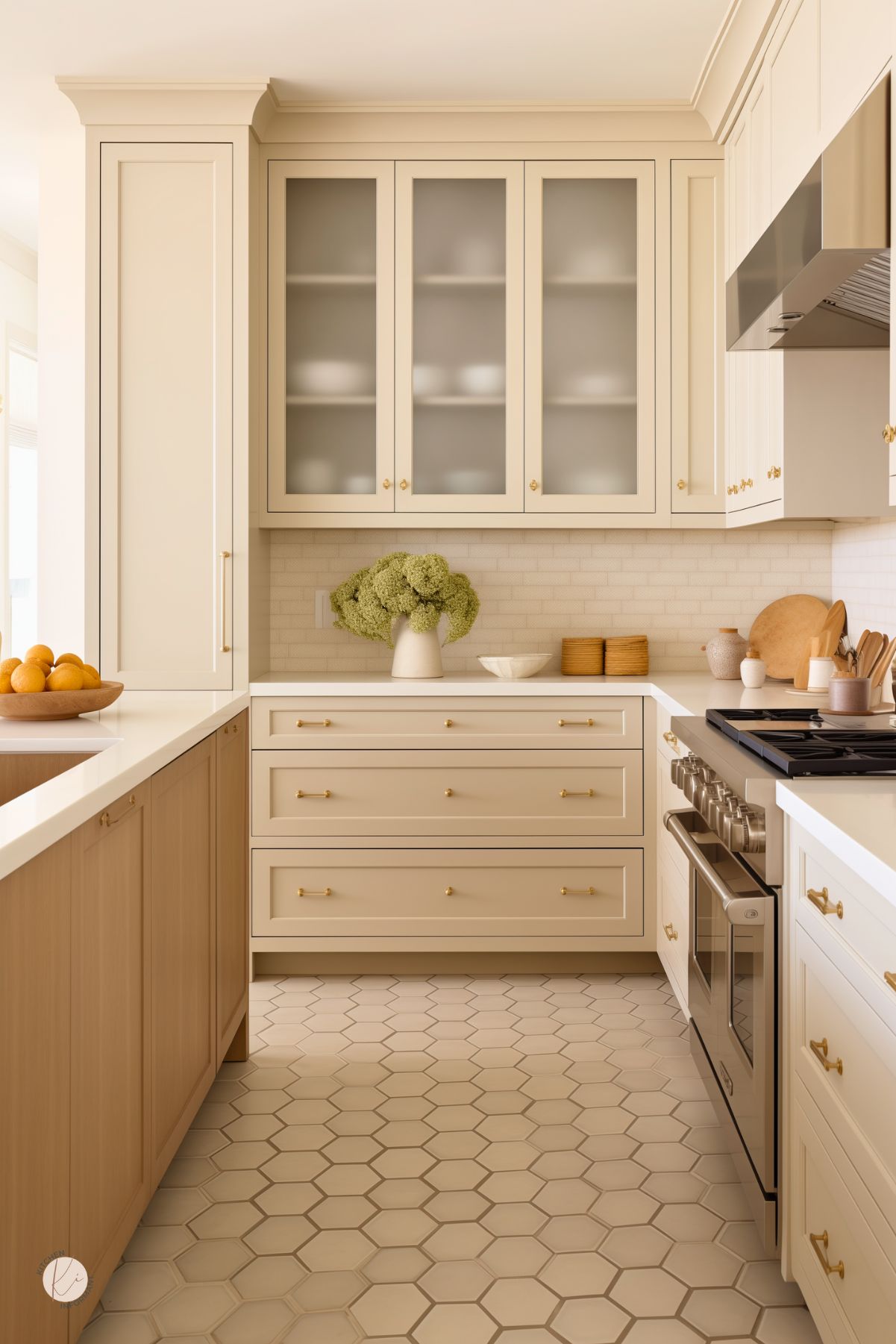
You May Also Like:
